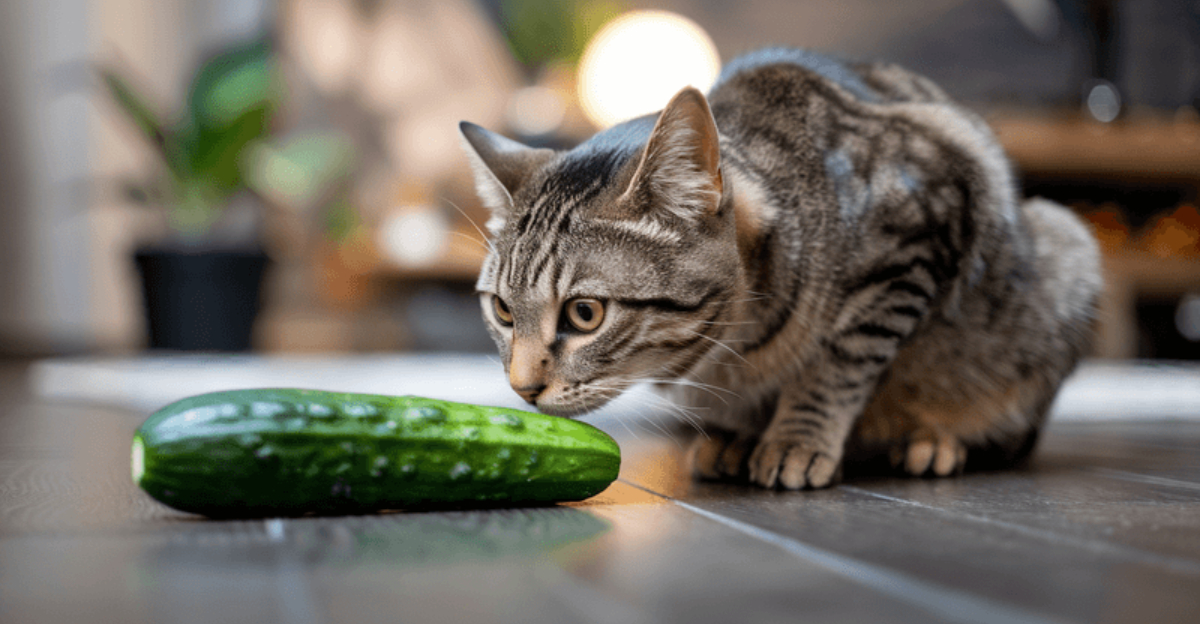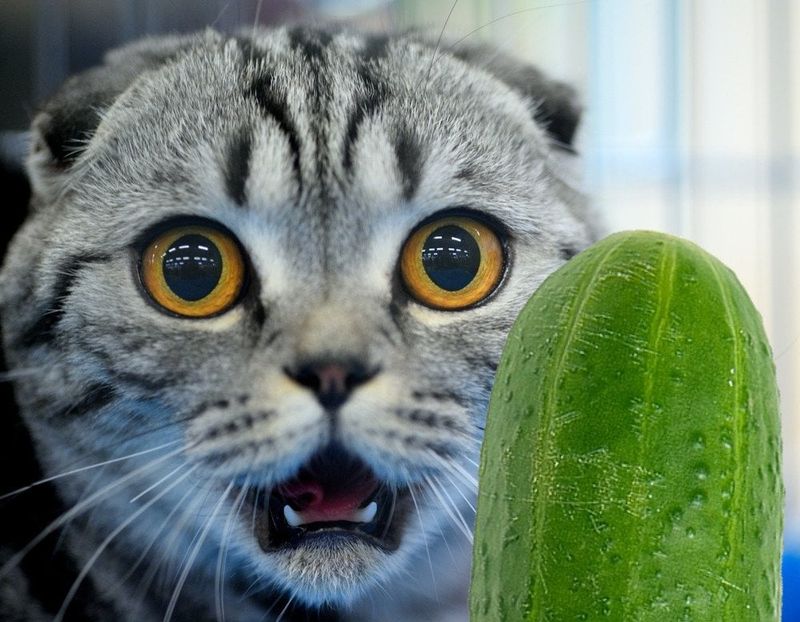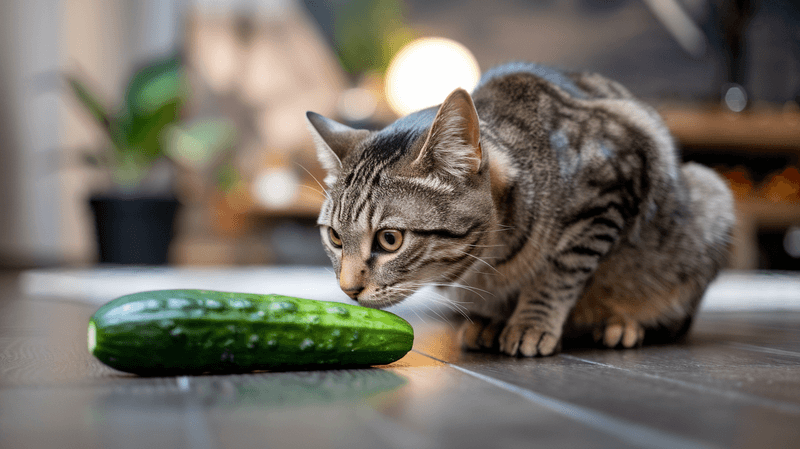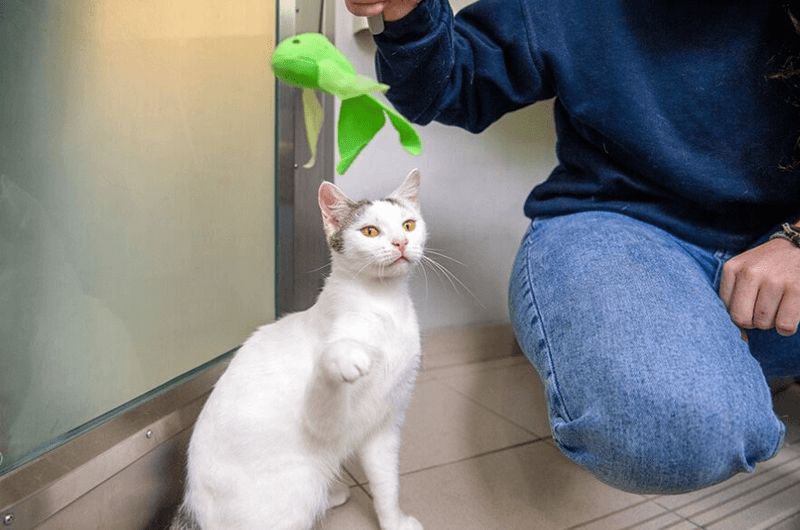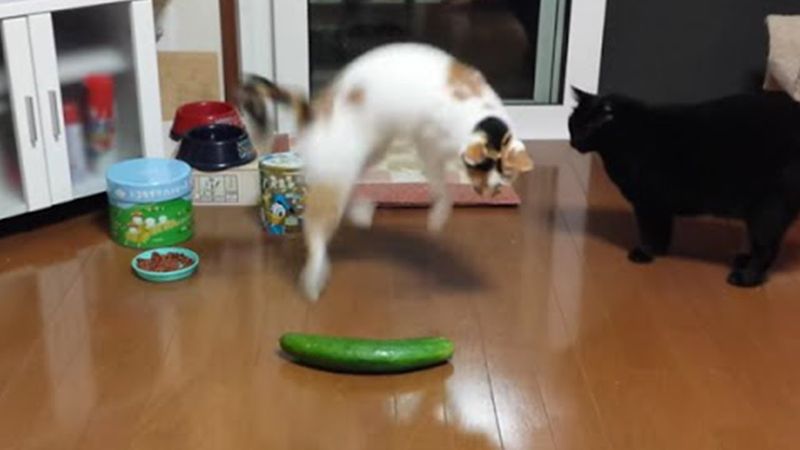📖 Table of Content:
The phenomenon of cats reacting fearfully to cucumbers has gained significant attention through viral videos, where cats are startled upon encountering a cucumber placed behind them. Experts have investigated this behavior and offer insights into its causes and implications.
1. Understanding the Fear Response
When a cucumber is stealthily placed behind an unsuspecting feline, the sudden appearance can activate a fear response. Cats are naturally cautious, and unexpected changes in their environment, especially unfamiliar objects, can cause them to panic. Behaviorist Dr. Pamela Perry from Cornell University explains that this reaction is not due to cucumbers specifically but arises from the surprise element. Such reactions highlight the cat’s instinctive need to stay alert in potentially threatening situations. This behavior underscores both their curious nature and survival instincts.
2. The Snake Resemblance Theory
Some suggest cucumbers might resemble snakes, sparking a fear response in cats. However, this theory has its skeptics. Dr. Perry notes that while some propose this resemblance triggers fear, cats don’t inherently fear snakes. Many cats even hunt them. This notion challenges the snake resemblance theory, emphasizing cats’ complex behaviors and varied reactions. Cats might see cucumbers as unfamiliar rather than predatory, illustrating their instinctual curiosity mixed with caution.
3. Potential Risks of the Cucumber Prank
Pranking cats with cucumbers may seem amusing, but it can lead to stress and anxiety. Frightened cats experience physiological stress responses, potentially affecting their long-term well-being. Dr. Perry highlights that timid cats might associate other stimuli, like food dishes or locations, with fear. This can disrupt their environment, leading to mistrust and apprehension. Such pranks risk damaging the bond between pet and owner, causing unintended negative impacts on the cat’s behavior and emotional health.
4. Alternative Ways to Engage with Your Cat
Rather than startling your cat with cucumbers, try engaging in more positive interactions. Providing toys, treats, and interactive play encourages a stronger bond with your feline friend. Dr. Perry advises playing in enjoyable ways, promoting happiness and trust. This approach fosters a welcoming environment, ensuring both cat and owner share joyful experiences. Building these positive moments enhances the relationship, showing love and care without unnecessary stress.
5. Cats’ Natural Cautiousness
Cats’ cautious nature is deeply rooted in their evolutionary history as solitary hunters. They are always on the lookout for potential threats, and sudden changes in their environment can startle them. This instinctive behavior is meant to keep them safe from predators and other dangers. The surprise of a cucumber might mimic an unexpected threat, tapping into their natural wariness. Understanding this cautiousness helps explain why cats may react so strongly to unexpected objects like cucumbers.
6. Behavioral Insights from Experts
Experts like Dr. Pamela Perry offer valuable insights into feline behavior, explaining why cats may react unexpectedly to cucumbers. Their expertise sheds light on how cats perceive their environment and assess threats. Understanding these behaviors helps pet owners create safer, more comfortable spaces for their cats. Experts emphasize the importance of respecting a cat’s natural instincts and providing environments that minimize stressors. Their insights guide owners in nurturing their pets’ mental well-being.
7. Historical Anecdotes of Cats and Cucumbers
Historically, anecdotes of cats interacting with peculiar objects like cucumbers reveal amusing tales. While modern viral videos popularized this phenomenon, stories of cats’ quirky behaviors have long amused animal lovers. These anecdotes highlight the timeless nature of feline curiosity and their penchant for surprise. Such stories, whether serious or lighthearted, offer a glimpse into the playful and unpredictable world of cats. Appreciating these historical contexts enriches our understanding of cats’ enduring appeal.
